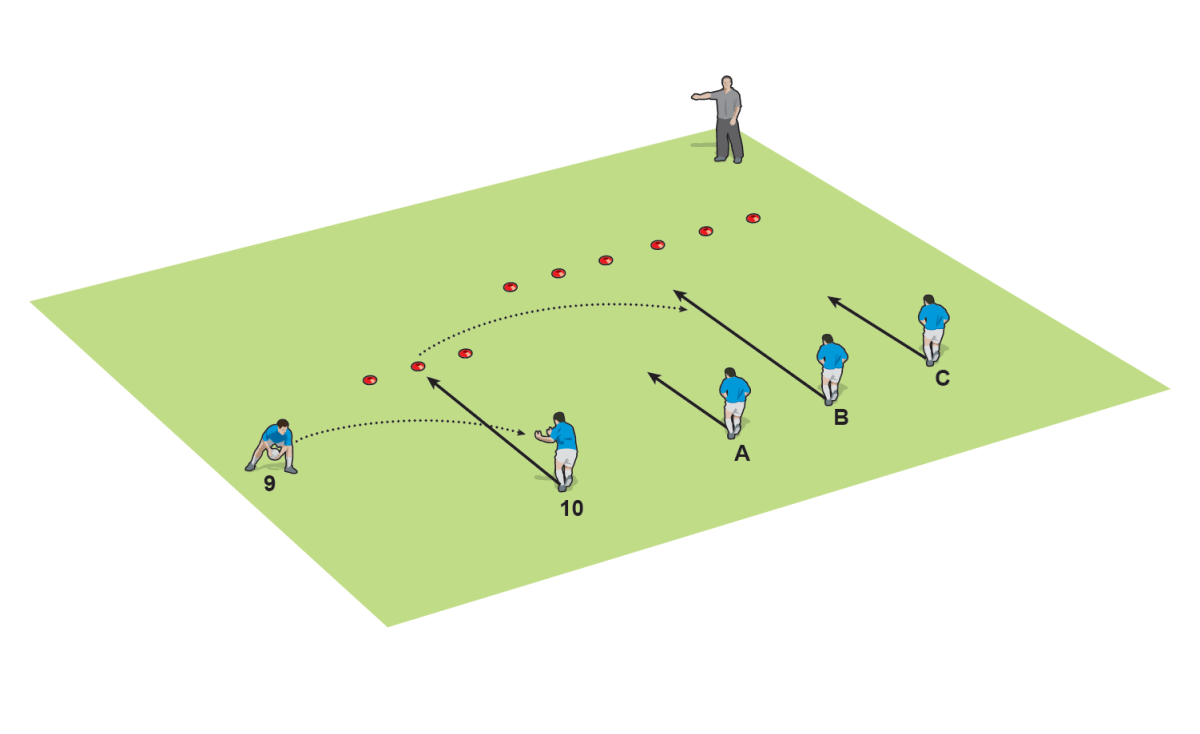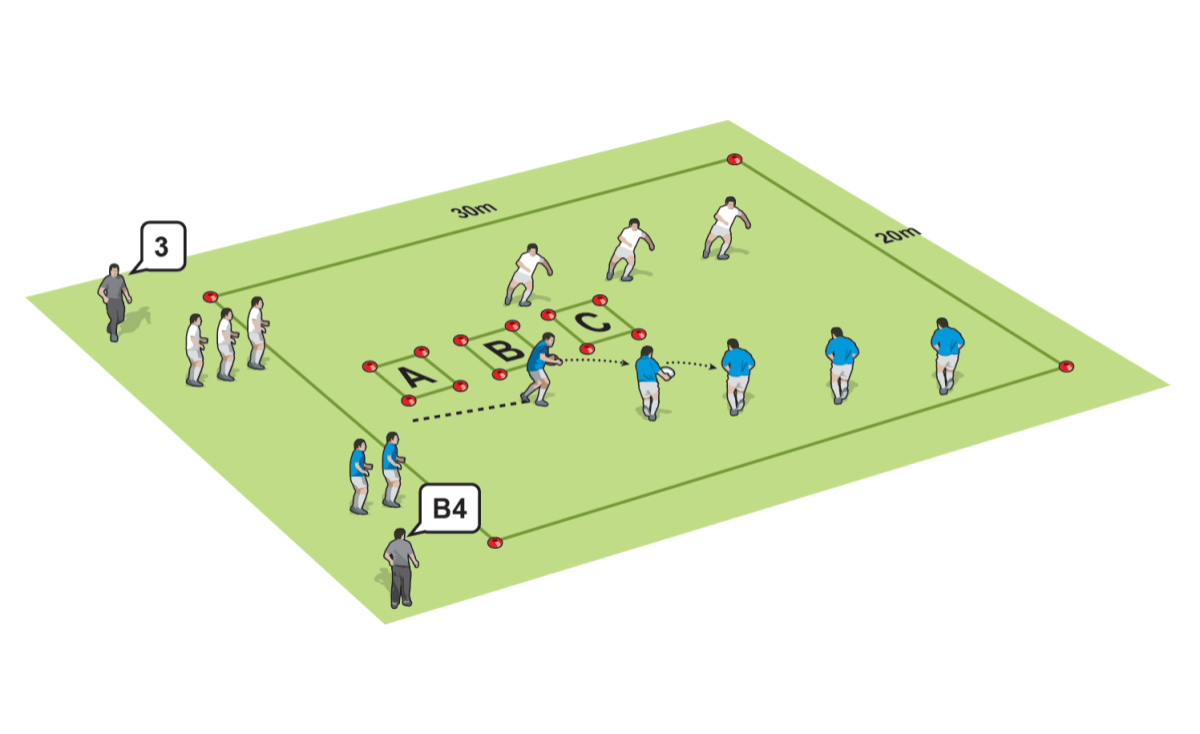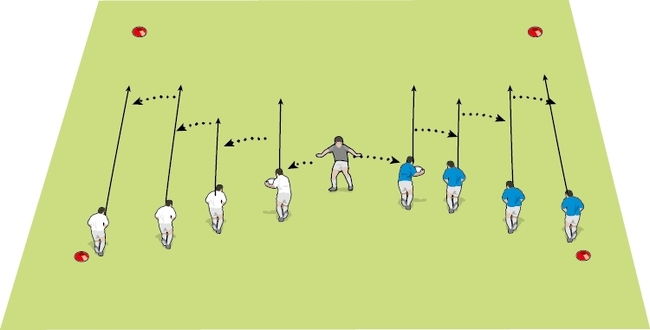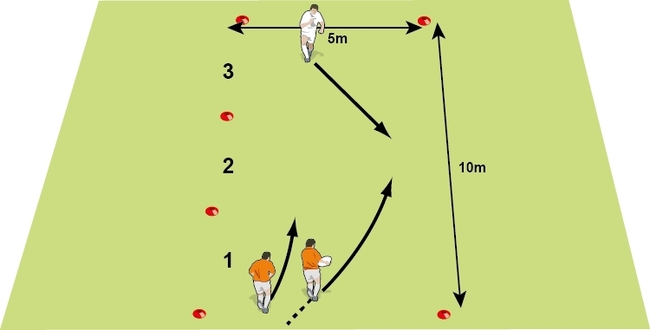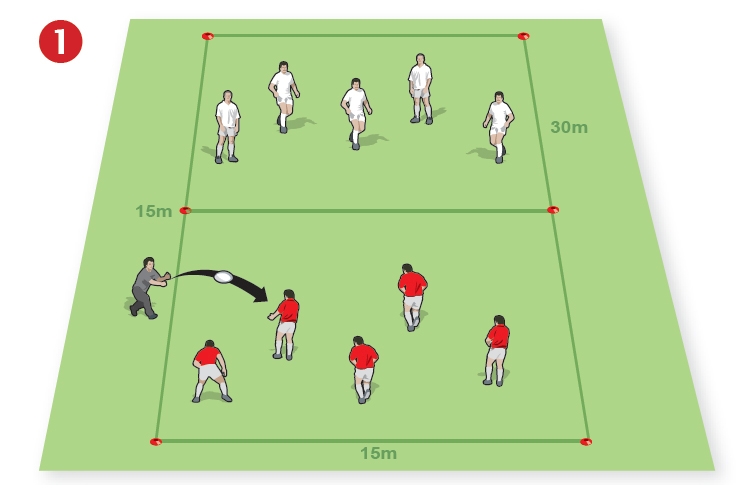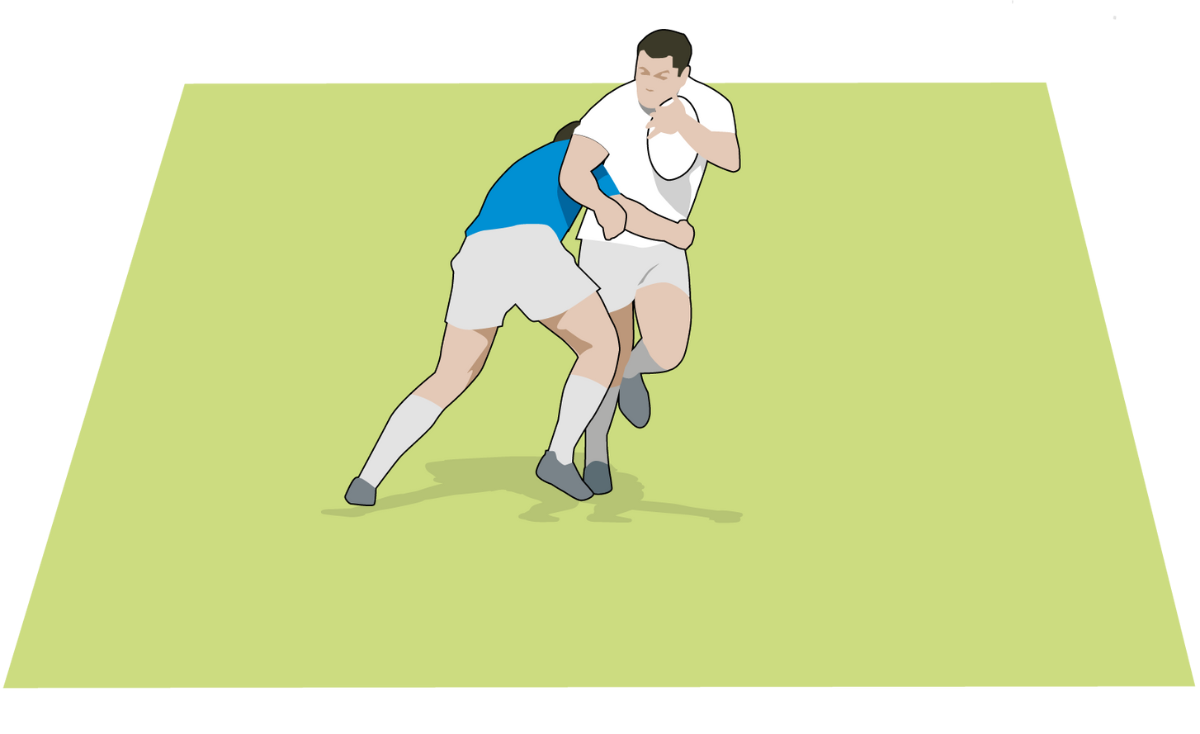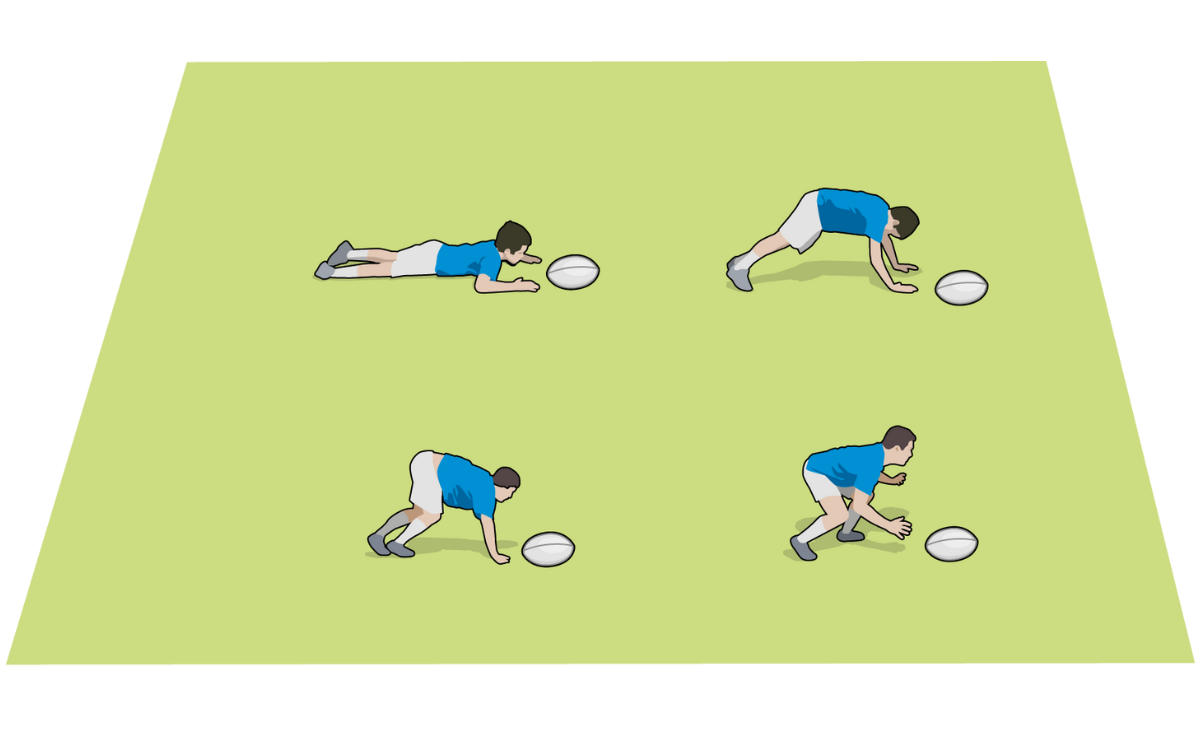One-pass plays
From a tight or close ruck, a low-risk one-pass play can create opportunities to go forward outside the fly-half or the first receiver.
WHY USE IT
One-pass plays are low risk and so should be executed with greater confidence at the tackle line.
set up
Balls, cones, three ruck pads and a 20m x 30m box for the game.
HOW TO PLAY
ACTIVITY: A player feeds a first receiver, who runs forward about 3m before passing or dummy passing. Hold up a coloured cone - one colour indicates dummy, the other indicates pass. The other three runners aim at different gates, running and cutting angles.
DEVELOPMENT: In the same area, put three ruck pad-holders 3m behind three gates of cones. They have to run forward through the gates before changing directions to mark the attackers.
GAME: Set out three rucks, labelled A, B and C, inside the box. Put a group of at least six attackers and five defenders at the side of the box. Tell the attackers which ruck to work from and then announce the number of attackers and defenders who will be involved. A feeder with a ball runs to that labelled ruck, waits for the attackers to set and then passes out. The attackers have one pass from the first receiver to break the tackle line. They can pass out of the tackle to score.
Coaching points
- First receiver attacks the line before releasing the pass.
- 9 passes to 10, who then passes to one of the three receivers
- If you hold out a particular coloured cone, then 10 dummy passes
- Players, A, B and C run angles to cut through the cones
Related Files
- Ruck pad-holders run up to the cones and then adjust to block the runners, if they can
- Receivers run different angles to attack the spaces between the pads
- 10 attacks the line and picks the best runner to pass to
-
Call out how many defenders are to come forward
- Call out which ruck the 9 will pass from, and how many attackers to use
- The defenders come from the back foot
- The attack use a one pass play and are allowed to pass out of contact
Newsletter Sign Up
Coaches Testimonials

Gerald Kearney, Downtown Las Vegas Soccer Club

Paul Butler, Florida, USA

Rick Shields, Springboro, USA

Tony Green, Pierrefonds Titans, Quebec, Canada
Subscribe Today
Be a more effective, more successful rugby coach
In a recent survey 89% of subscribers said Rugby Coach Weekly makes them more confident, 91% said Rugby Coach Weekly makes them a more effective coach and 93% said Rugby Coach Weekly makes them more inspired.
Get Weekly Inspiration
All the latest techniques and approaches
Rugby Coach Weekly offers proven and easy to use rugby drills, coaching sessions, practice plans, small-sided games, warm-ups, training tips and advice.
We've been at the cutting edge of rugby coaching since we launched in 2005, creating resources for the grassroots youth coach, following best practice from around the world and insights from the professional game.
